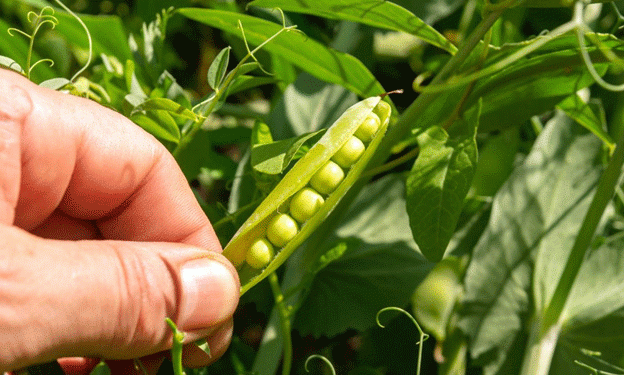In the quest for sustainable dairy farming practices, the integration of diverse crops is gaining traction among dairy farmers. A recent field meeting held in Renswoude focused on the cultivation of a barley-pea mixture, coupled with grass undersowing. This event offered a platform for dairy farmers to evaluate the benefits and challenges of this crop combination, especially in light of its potential to serve as a sustainable and financially viable alternative to traditional silage corn.
The Importance of Crop Diversification
Edith Finke, a Nutrient and Mineral Advisor at DLV Advisory, emphasizes the importance of crop diversification in transitioning from conventional to organic dairy farming. “Given the eco-measures within the Common Agricultural Policy (CAP), legumes like the barley-pea mixture are particularly interesting. They provide not only financial benefits but also contribute to better crop rotation and soil health. This could elevate a farm to gold class status when combined with other measures like undersowing corn, green cover crops, and grass-clover mixtures,” she explains.
Benefits of Barley-Pea Mixture
The barley-pea combination stands out for its nitrogen-fixing properties, making it an excellent choice as a catch crop. This mixture helps keep the soil covered nearly all year round, enhancing soil health and reducing erosion.
Cultivation Costs and Yield Potential
The demonstration plot in Renswoude was prepared after a previous corn crop and involved applying 25 m³ of cattle manure along with a small amount of compost. The plot was then worked with a disc harrow, and 45 kg of summer barley and 136 kg of summer peas were sown per hectare, complemented by 36 kg of English ryegrass for undersowing. The total cultivation cost was approximately €800 per hectare.
While this initial investment raised concerns about immediate profitability compared to traditional silage corn, Finke argues that the crop should not be viewed in isolation. “It’s about the broader picture of crop rotation, soil health, and feed yield. When you total the yield of barley and peas along with the grass undersowing, you can achieve around 13 tons of dry matter per hectare. This is a significant return when compared to just silage corn,” she asserts.
Nutritional Value of the Crop
Derk Boessenkool from AgruniekRijnvallei discussed the feed value of the barley-pea mixture, which has a feed value of 850 VEM, 120 grams of crude protein, and 200 grams of starch per kilogram of dry matter. While this nutritional profile may seem less appealing for dairy cows, it can serve as a valuable addition to specific rations, particularly for heifers and dry cows.
Marien van Ravenhorst, the farmer managing the demonstration plot, chose to ensile the crop separately. He highlighted the importance of timing the cutting, as it significantly influences the final feed value. Additionally, short chopping is crucial for maintaining the feed structure, which helps improve rumen stability and gut health in cows.
Success of Grass Undersowing
The undersowing of grass in the demonstration plot proved successful. “The grass looks fantastic and will serve as ground cover immediately after harvesting the barley-pea mixture, allowing for two harvests,” noted one participant. This practice aligns with the strategy of continuous soil cover, helping to combat weeds and improve soil structure. The results were particularly impressive given the challenging weather conditions experienced this spring, which included significant rainfall.
The field meeting in Renswoude underscored that the barley-pea mixture presents a valuable alternative to silage corn, provided it is viewed in the appropriate context. “It’s not just about yield in tons; it’s a sustainable choice that contributes to healthier soil, improved crop rotation, and ultimately a more stable business. While this approach must fit the individual farmer’s vision, it offers interesting possibilities for those looking to innovate and pursue sustainability,” concluded Finke. The experiences of the Van Ravenhorst family illustrate that, despite challenges, the advantages in soil health, diversity, and potential financial returns can be worthwhile.
Error




